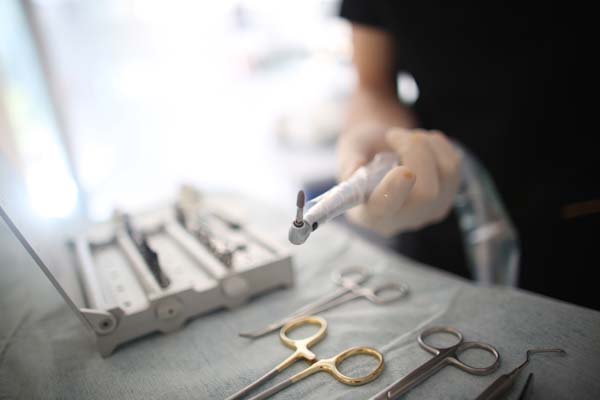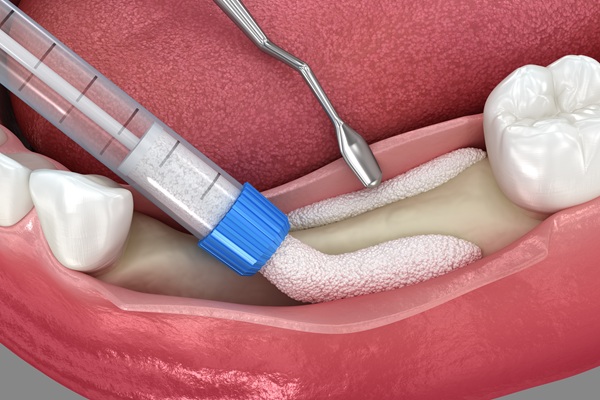When Socket Preservation Grafting is Recommended

A recent tooth extraction needs socket preservation grafting. An empty socket is a space left after a dental extraction. Bone loss is a problem in the absence of dental roots. It tends to compromise the structural foundation of the remaining teeth. If you want to know when a dentist recommends socket preservation grafting, here are the details.
What this procedure is
The jawbone starts to reshape the moment a tooth leaves it because it wants to recycle unused nutrients. That is why the dentist needs to perform socket preservation grafting. This process blocks the body’s reabsorption of unused components in the jawbone. It then prevents jawbone loss.
An alveolar ridge is a strip of bone surrounding the tooth roots. It is present in each tooth. This tiny bone dissolves once the tooth leaves the jawbone. This signals the body about the tooth’s absence. It then starts to demolish the stagnant tissues in the socket. This allows the body to conserve blood, energy, and materials.
The result of this process is bone atrophy. An alveolar ridge cannot regenerate. It cannot have any replacement without surgery. Oral surgeons use socket preservation grafting to keep this tiny bone intact. It also helps preserve the surrounding jawbone tissue until the dentist inserts dental implants. Dentists may recommend socket preservation after a dental extraction to reduce jawbone loss.
When to consider socket preservation grafting
The socket from a tooth extraction will be sensitive right after the extraction. This is one of the reasons for having socket preservation. This procedure helps protect the socket from damage. It also shields the socket from infection.
A socket can become dry after the tooth extraction. This can happen if the blood clot loosens and then exposes the nerve underneath. The clot is supposed to help the area heal. Preserving the alveolar ridge is also a reason for performing socket preservation grafting. The alveolar ridge breaks after a dental extraction. A deformed alveolar ridge will make it challenging to place a dental implant in the socket.
Any deformity in the bone may cause the procedure to fail. The possible success of a dental implant depends on the condition of the alveolar bone. Socket preservation can restore the patient’s teeth and close gaps between them. It can make the jawbone less prone to bone loss and keep the implants firm.
Socket preservation grafting is possible with the patient’s own bone or synthetic materials. The dentist will need to get the bone from another section of the tibia, hip, or jaw. A collagen membrane will cover up the socket once the dentist places the graft in the socket. It can stimulate and dissolve the bone graft. This encourages the graft to regenerate right away.
Socket preservation grafting can restore your appearance and dental health
Tooth extraction may need this procedure to stabilize the dental socket. The alveolar ridge needs repairs through socket preservation grafting. The regeneration of the tiny bone may lead to the possible success of the dental implant procedure. Your dentist will determine if you are a good candidate for this treatment.
Are you considering getting socket preservation grafting in the Brighton area? Get more information at https://brighton.drjstearns.com.
Check out what others are saying about our services on Yelp: Read our Yelp reviews.
Recent Posts
Oral bone grafting procedures can help restore mouth functionality, health, and appearance. These surgical procedures vary in type and extent. Continue reading to learn more about dental bone grafts, the surgical grafting process, and why someone might need oral bone grafts.Surgeons perform bone grafts throughout the body. Oral bone grafting occurs in the mouth, usually…
An oral pathology must receive immediate treatment. This can prevent more complications later on. Your oral surgeon can help correct any dental problem. Here are the details about each common oral pathology and its corresponding treatment.This oral pathology results from a bacterial infection because of plaque buildup. Symptoms of this condition include gum bleeding and…
All-on-4 implants offer stable, full-arch solutions when teeth are failing or missing. This approach replaces an entire row of teeth with a denture or fixed bridge supported by four dental implants. It restores chewing strength, clear speech, and everyday confidence while keeping care simple. Here is when this option rises to the top and what…
Jaw surgery, formally known as orthognathic surgery, is a common procedure that an oral surgeon performs to address a range of dental and facial problems. Jaw surgery may involve manipulating the upper or lower jaw bones or both. This article will define the three most common types of jaw surgeries: maxillary ostomy, mandibular osteotomy, and…


